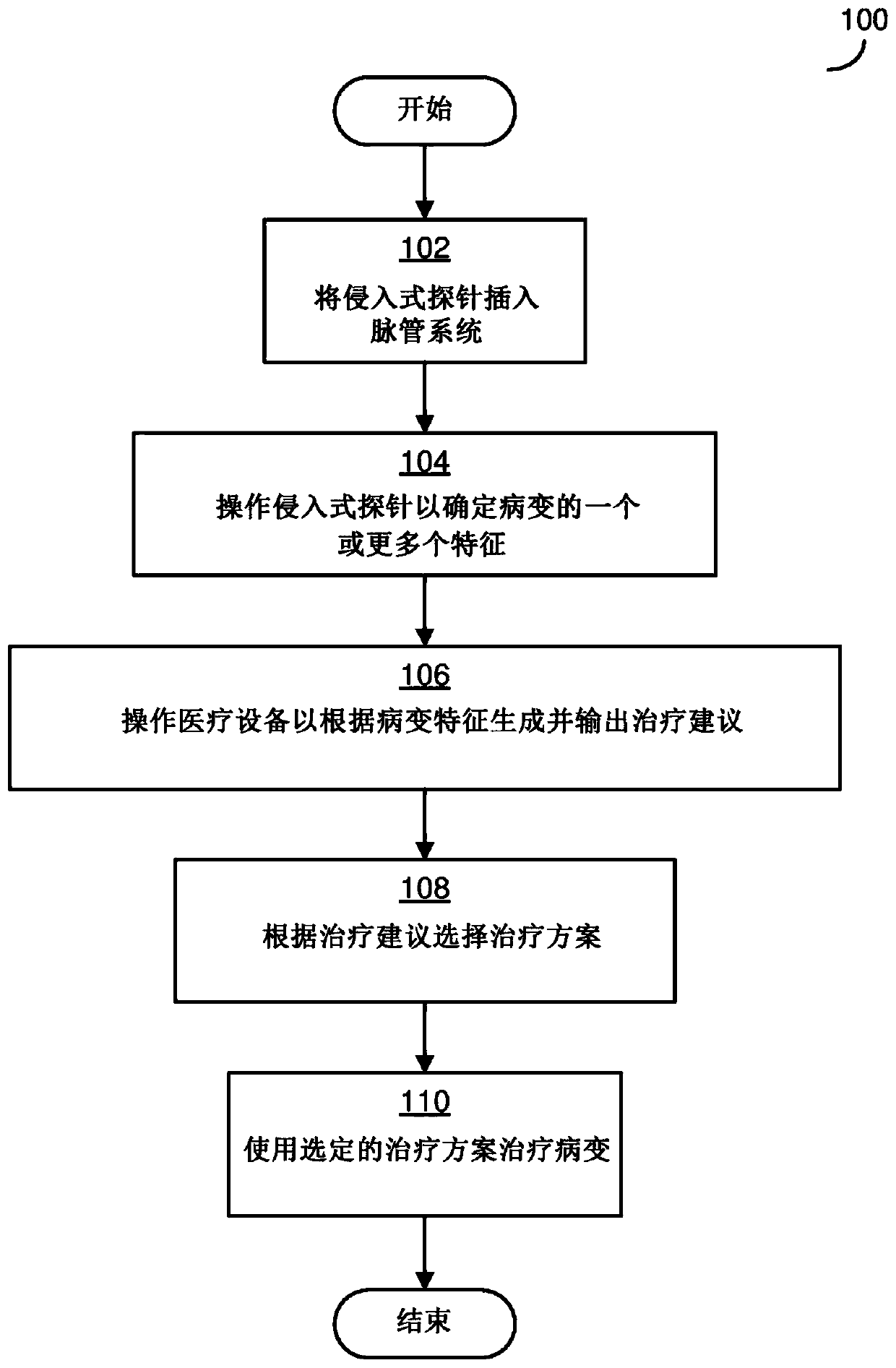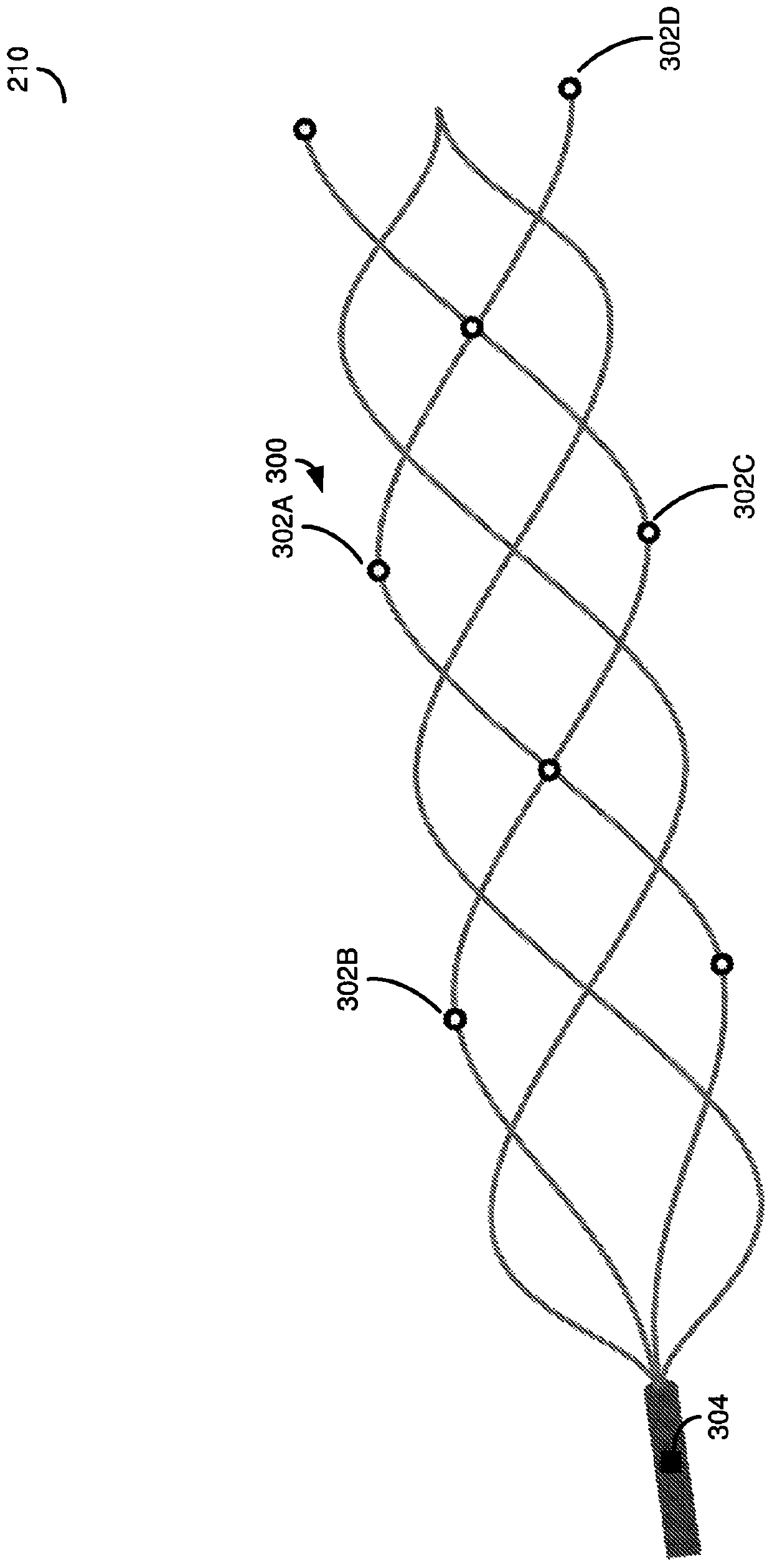Medical device making treatment recommendations based on sensed characteristics of a lesion
A medical device, post-treatment technology, applied in the field including the treatment of lesions, which can solve the problems of unintentional release of clots, vascular embolism, etc.
- Summary
- Abstract
- Description
- Claims
- Application Information
AI Technical Summary
Problems solved by technology
Method used
Image
Examples
example 1
[0217]One example of the manner in which the techniques described herein may be used is an invasive smart guidewire. Invasive guidewires can be used to pass through the vascular system. Using the sensors and analytical techniques described herein, an invasive guidewire can characterize the tissue / substance in contact with it and communicate the characteristics of that tissue / substance to the clinician. Invasive guidewires can also help additional devices reach the interventional site in the patient.
[0218] In this example, the guidewire includes a sensor (preferably an EIS sensor), an impedance spectrometer and a handle. The guidewire may also include additional components that can be inserted along its length during use. Sensors can be used to sense and characterize properties of tissue / substance in contact with it. For example, when used with an impedance spectrometer to perform high frequency impedance measurements, the sensor can be used to determine tissue / substance ...
example 2
[0221] Clinicians can use the guidewire described in Example 1 to determine the best treatment strategy for patients with blocked arteries. Clinicians are able to use the guidewire to characterize the tissue / substance blocking the artery and then choose between different possible treatment options based on this information. In some embodiments, the guidewire may provide treatment recommendations to the clinician based on one or more characterizations it has performed, and optionally, based on data from previous treatments performed with the guidewire.
[0222] In this example, a clinician can use a guidewire to assess and treat arterial lesions. The clinician can first steer the guidewire to the thrombus site, optionally with a handle, and then penetrate the thrombus. Next, the clinician can use the guidewire to measure the composition of the blood clot and / or the tissue / material that is blocking the artery. The clinician can then determine the best treatment for the blocked...
example 3
[0226] Another example of a device that can be used in accordance with the techniques described herein is a smart stent-retriever. Stent-retrievers can be used to remove blood clots from patients. Using the sensors and analytical techniques described herein, the invasive stent-retriever can characterize the clot it contacts and convey the characteristics of the tissue / substance to the clinician.
[0227] In this example, the stent-extractor comprises at least one sensor (preferably at least one EIS sensor and / or EIT sensor), a measuring unit and a handle. The stent-retriever may include sensors at key locations so that information about the clot can be obtained from locations within the clot that come into contact with it. When the stent-retriever includes more than one sensor, the sensors are capable of sensing different properties of the clot in contact with it. For example, the stent-retriever can include one or more sensors capable of sensing the binding of the clot to t...
PUM
 Login to View More
Login to View More Abstract
Description
Claims
Application Information
 Login to View More
Login to View More - R&D
- Intellectual Property
- Life Sciences
- Materials
- Tech Scout
- Unparalleled Data Quality
- Higher Quality Content
- 60% Fewer Hallucinations
Browse by: Latest US Patents, China's latest patents, Technical Efficacy Thesaurus, Application Domain, Technology Topic, Popular Technical Reports.
© 2025 PatSnap. All rights reserved.Legal|Privacy policy|Modern Slavery Act Transparency Statement|Sitemap|About US| Contact US: help@patsnap.com



